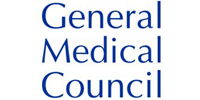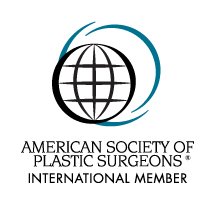Mr Richard Price FRCS (Plast)
PLASTIC & COSMETIC SURGEON IN CAMBRIDGE
Certified Cosmetic Surgeon with the Royal College of Surgeons of England
Face Lift Surgery
Facelift procedures are varied and complex – probably some of the most complex procedures in cosmetic surgery. The standard Facelift addresses the areas below the cheekbones to the jawline. A Neck Lift, which can be done in conjunction, addresses the area below the jawline, and a Mid-Face Lift addresses the area below the eyes – usually in conjunction with a Blepharoplasty operation. Because of the complex nature of the surgery, which particular procedure is best for you is something to be discussed carefully with Mr Price.
Laxity and descent of the facial tissues leads to drooping in the area of the face between the cheekbones above and jaw below. A Facelift not only removes skin but also tightens the tissues beneath in order to reposition the facial skin into a more youthful position.
In a standard facelift operation, an incision is made from within the hair of the temple, down in front of, beneath and behind each ear (i.e. a J-shaped incision). The skin of the face is lifted, and then the muscle layer underneath pulled tighter using a number of techniques. The skin is then redraped and any excess removed before closing the wound neatly with sutures.
After the operation you will wake up with a bandage around the head and, sometimes, a drain on each side. The drain is removed before you go home. Full facelifts are usually undertaken using a general anaesthetic – ie you are asleep. Generally patients are able to go home the same day.
A mini facelift can be performed under Local Anaesthetic (you are awake) or a General Anaesthetic (you are asleep). It is a smaller facelift operation and is carried out as a day case procedure.
Following the operation your face will be swollen and bruised, both of which tend to recover over a week or two. Occasionally bruising may take longer to wear off. Mr Price uses dissolving sutures for his facelifts
It is quite common for the skin of the face to feel numb for a number of weeks and, occasionally, months. It is much less common that the nerves supplying the muscles of the face can be damaged, leading to weakness in some of the muscles of the face. This usually recovers over 6-8 weeks but can, occasionally, be permanent. This is probably the most significant long-term risk of the procedure.
If a mid-face procedure is carried out at the same time, there will also be scars along the lower eyelid. Both these and the scars around the neck fade from red to white over a number of months and are usually very well hidden in time. For more information about mid-face lifts and blepharoplasty, see the blepharoplasty page.
A Facelift procedure rejuvenates the face but does not stop your biological clock from ticking, and over time the face will continue to sag slowly, so that this is a procedure that is often repeated after a number of years.
Neck Lift
A Neck Lift is the procedure to tighten and re-shape the neck and is usually carried out with some sort of Face Lift. The operation aims to tighten the neck skin and smooth it out. When carried out alone, the scars are lower on the face than a full facelift scar, typically starting in front of the ear rather than in the hairline. Depending on whether you have vertical neck bands, you might consider a platysmaplasty procedure, where these bands are corrected using an incision below the chin. Mr Price can advise you on this at your consultation.
As in the facelift procedure, the underlying muscle is tightened before the skin is redraped and sutured. You should be aware that the scars behind the ear are irregular and can be lumpy for a period of time as they settle – this is in an attempt to minimise the length of the scars.
Fullness beneath the chin can be addressed by either a simple neck lift, or by removal of the fat here – which can be by liposuction of via the incision described above.
The postoperative care is similar to that of a face lift; you will wake with drains and a bandage, both of which will be removed the next day. A fresh bandage may be applied and you will be able to go home after a night in hospital.
It is common for there to be some numbness in the skin of the neck after the operation, which improves over weeks and/or months. Another potential problem is injury to the nerve that pulls the lower lip down, giving an asymmetric smile – this is rare in Mr Prices experience.
Face Lift surgery prices
To make an appointment to discuss Face Lift surgery in Cambridge, please contact Mr Price’s secretary.







